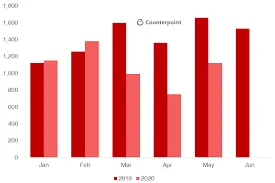The WHO declared an end to COVID-19 in the first few months of 2023. Since 2019, the pandemic has impacted many industries and sectors. Among them is the automotive industry. Nevertheless, manufacturers are not sitting back. As a result, the automotive sector has recorded some notable growth since the pandemic launched. We’ll discuss all about it in this piece. First, let’s review just how the pandemic affected the car-producing space.
Table of Contents
Impact of COVID-19 on the Automotive Industry
The automotive industry relies on active production lines that cut across different countries and regions. So, many manufacturing operations shut down at the start of the pandemic. That was as a result of governments imposing lockdown procedures.
It’s worth noting that a single car has over 30,000 parts. Due to restrictions, factories could not quickly source materials for new car production. These include large components like the engine and smaller features like a replacement actuator.
Besides the shutdown, manufacturers had little reason to continue producing. Roads were empty, and no one was driving around. In simple words, there was a decline in car sales and demand. The industry was more or less at a halt.
However, the human nature is innovative. So, automotive manufacturers sought ways to tackle the challenges. Many adapted to the pandemic to mitigate setbacks. At the moment, it appears many are rushing to pick up. That’s because the manufacturing rate has significantly increased after the pandemic. Thankfully, the industry is picking up and is recording significant growth at the moment.
Higher Purchases from Customers
Today, more customers are buying cars for one simple reason — the internet. With the restrictions during COVID-19, the internet was the only way people could travel. So, customers learned to rely a lot on it.
Before the pandemic, some customers would prefer visiting automotive shops to price vehicles. Some others will compare online. But during the pandemic, only the latter option was viable.
It’s similar if considered from the producer’s angle. Some manufacturers may not have heavily relied on the internet before the pandemic. But lockdowns forced many to maintain a strong online presence or lose customers.
Therefore, it’s now easier for customers to access cars and compare prices. That has resulted in a spike in car purchases. Reports show that the percentage increases month by month.
The flip side is that manufacturers must meet the high demand halfway. That’s another aspect contributing to development. Producers are improving their facilities to satisfy customers’ requests.
More Transparency in the Supply Chain
Again, the internet is making things transparent in the automotive supply chain. The reason is that many manufacturers migrated online during the pandemic. In particular, producers now have many tracking mediums.
The OEMs and tier-one suppliers are an ideal example. Usually, players at these levels have limited eyes on what happens in lower tiers. For instance, tier-one suppliers don’t get much insight into processes and insights of those in tier-four.
Due to the pandemic, the above is no longer the case. Suppliers at all levels were forced to be in steady contact since they couldn’t readily see each other. Hence, those in the top tiers now routinely track processes across the supply chain.
Such transparency has many upsides for the automotive sector. At the least, it’ll improve performance in production output. That involves both on-time delivery and all-round quality.
Increase in Digital Tech Integration
Recent cars feature much more digital technology than ever before. The reason is simple. With the pandemic, customers became more familiar with digital and connectivity devices.
The turn to digital tech isn’t because of lockdowns alone. But it’s also because people had to limit contact with others — even those in the same homes. So, rather than watching a movie with a friend, the safe option would be to share — digitally.
Customers had to deal with such a contactless lifestyle for over a year. As a result, many consider it normal. Manufacturers have no option but to integrate more digital features. That’s why smart and shared mobility systems are a lot more popular. Examples include options like e-hailing, micromobility, and car sharing.
The development will likely endure. If there’s one thing about technology, it hardly regresses. So, more and more cars will be more connected and digital.
Push for Electric Vehicles
It’s easy to attribute the rise of EVs today to the increase in digital tech. That’s valid, but it’s not the case for most buyers. Many opt for electric vehicles to aid the environment.
COVID-19 obliged almost everyone to be conscious of the environment. People would wear face masks, use hand sanitizers, and do many other procedures. The target wasn’t only to protect themselves from the coronavirus. It was also prudent to safeguard others should they be asymptomatic.
The pandemic was global, so it wasn’t a topic of a few countries. Hence, it’s unsurprising that many customers want to stay safe even though the virus is gone. EVs provide such a solution when it comes to the automotive sector.
Electric vehicles are known to be more friendly to the environment. The main reason is that they release lower emissions. Also, they’re energy-efficient and use renewable sources.
The EV area of the automotive sector is recording significant growth. Customers are rushing sales, even though these electric cars are relatively more expensive. Nevertheless, there’s the advantage of lower operational costs.
EVs are expensive upfront. But after purchase, the cost of day-to-day running is more affordable. For a fact, electricity demands less money than gasoline. EVs also have fewer moving parts, which makes management minimal.
Conclusion
While COVID-19 lasted, it was a mix of situations for the world. About every sector felt the impact, with the automotive ranking among the top. It’s understandable, as manufacturers have nothing to do if there are no cars on the road. The good news is that the pandemic is done and gone. Also, though it has many downsides, its effect drives some growth and developmental changes.





